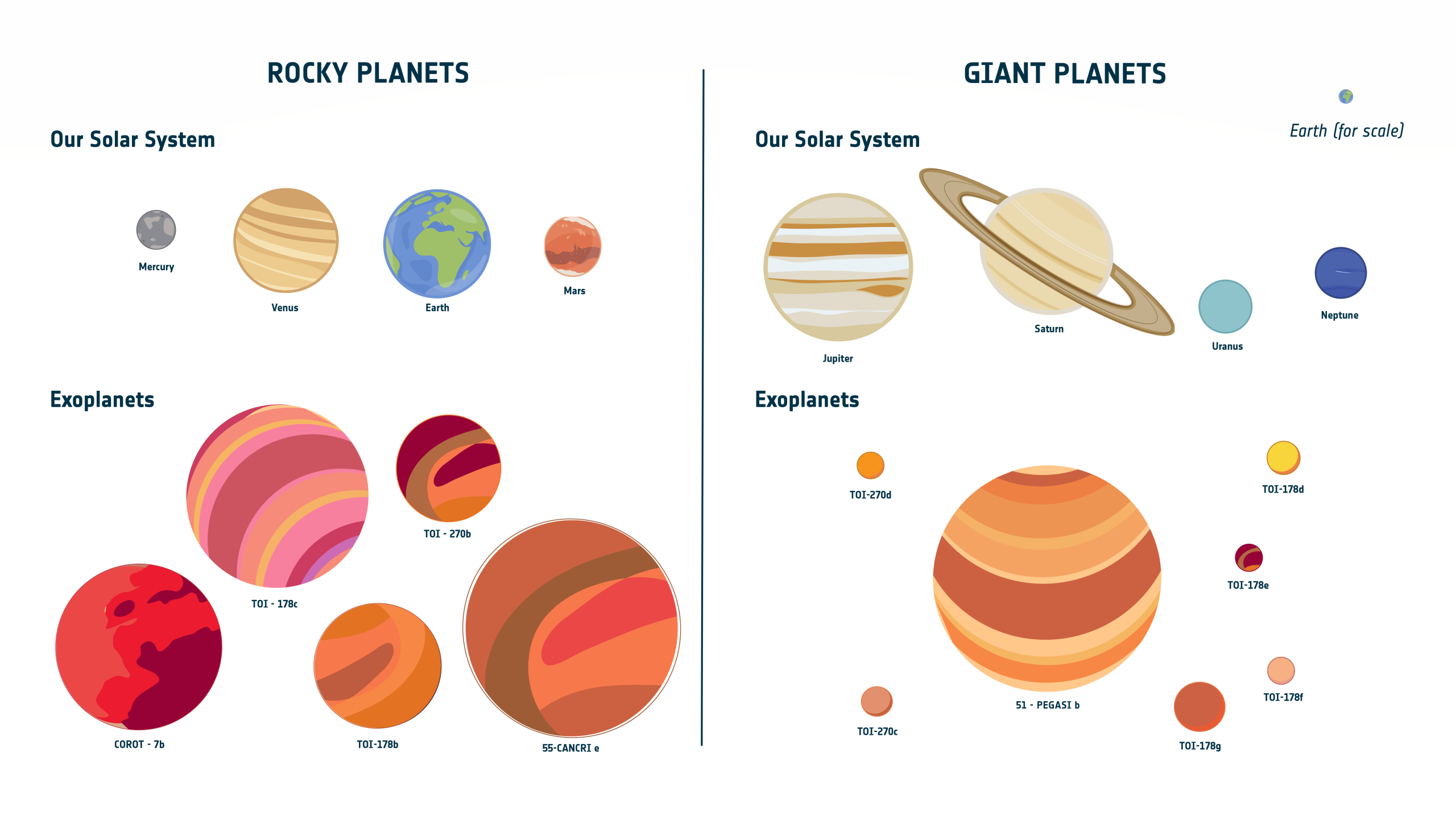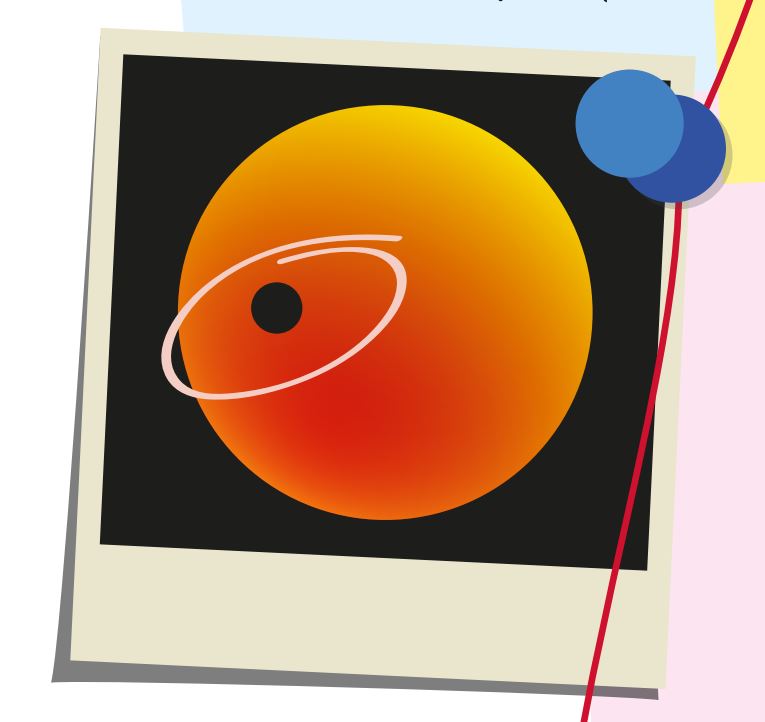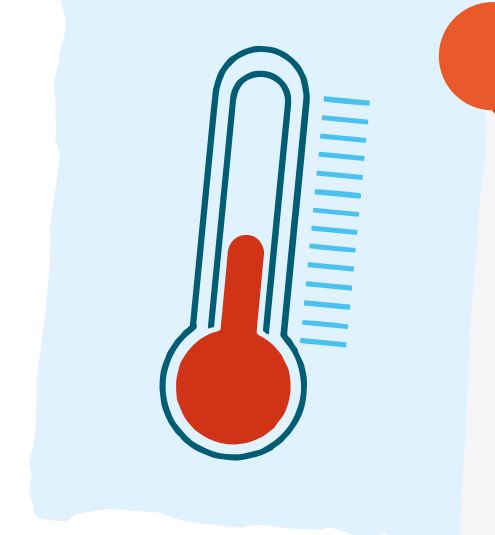
5. solis - Sastāvs
Mūsu Saules sistēmā planētas parasti iedala divās kategorijās: akmeņains un gāzveida. Tomēr eksoplanētas var ļoti atšķirties no mums pazīstamajām kaimiņplanētām. Masu, M, eksoplanētu nevar noteikt ar tranzīta metodi, bet ar citām metodēm, piemēram, radiālo ātrumu, var. Ja ir zināma gan planētas masa, gan rādiuss, mēs varam novērtēt tās blīvumu, ρun eksoplanētas sastāvs.
ρ = [katex]\frac{\text{M}}{\text{V}}[/katex]
kur V ir eksoplanētas tilpums. Lai aprēķinātu eksoplanētas tilpumu, pieņemsim, ka tā ir perfekta sfēra ar rādiusu R:
V = [katex]\frac{4}{3}\pi{\text{R}^3}[/katex]

Skatiet videoklipu par eksoplanētu blīvumu un sastāvu
Ir pieejami subtitri (tos automātiski ģenerē pakalpojums YouTube) - izvēlieties valodu, izmantojot YouTube atskaņotāja pogas.
Vai esat gatavi apskatīt risinājumu?
Vai esat apsprieduši eksoplanētas sastāvu? Zemāk pārbaudiet, vai jūsu secinājumi atbilst mūsu ekspertu piedāvātajam KELT-3b sastāva noteikšanas risinājumam.
Tagad kā piemēru aplūkosim KELT-3b.
1. attēls: reālu eksoplanētu, kas jau ir atklātas ap tuvējām zvaigznēm, mākslinieku nospiedumu piemēri.
KELT-3b masa ir 617 MZeme. Šo vērtību nav iespējams noteikt no tranzīta fotometrijas. Tā tika noteikta no iepriekšējiem novērojumiem, izmantojot citu metodi, ko sauc par radiālo ātrumu.
KELT-3b rādiuss jau ir noteikts, izmantojot Cheopsa datus un gaismas līkni. Zinot rādiusu, mēs varam aprēķināt eksoplanētas tilpumu, pieņemot, ka tā ir perfekta lode:
V = [katex]\frac{4}{3}\pi{\text{R}^3}[/katex]
Mp = 617 MZeme = 3.685 x 10 30 g
Rp *= 17.5 RZeme = 1.116 x 10 10 cm
* Šī rādiusa vērtība tika aprēķināta, izmantojot tranzīta dziļuma aprēķinu, varat izmantot arī allesfitter vislabāk piemērotā modeļa vērtība.
ρ = [katex]\frac{\text{M}}{\text{V}}[/katex] = 0,63 g [katex]\text{cm}^{-3}[/katex]
Šī vērtība ir daudz mazāka par Jupitera vidējo blīvumu un tuvāka WASP-189b (zināma karsta Jupitera eksoplanēta) blīvumam. Nelielais attālums līdz tās saimnieka zvaigznei un augstā temperatūra padara eksoplanētu "pūkainu".
Kāds ir jūsu eksoplanētas blīvums? Kāds, jūsuprāt, ir tās sastāvs? Kā jūsu eksoplanēta atšķiras no Zemes un citām Saules sistēmas planētām?
Apsveicam! Misija ir izpildīta!
Izmeklēšanas progress
100%
Vai esat analizējuši datus un apsprieduši savas eksoplanētas sastāvu? Apsveicam, detektīve, jūs esat veiksmīgi uzlauzusi Cheopsa datus!
Tagad varat turpināt pētīt eksoplanētu TOI-560c, atgriežoties izaicinājuma pārskata lapā, vai arī iesniegt savu projektu, lai saņemtu dalības sertifikātu.

Apsveicam eksoplanētu detektīvu, jūs pabeidzāt izmeklēšanu!
Vai vēlaties uzzināt vairāk par eksoplanētām?
Zemāk uzziniet, ko vēl varat darīt







